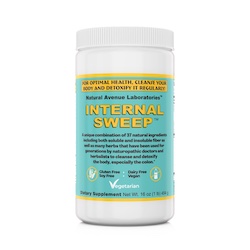Why Do Foods Like Pizza and Fried Rice Leave You Hungry Soon After?
Ever Wonder Why a Bowl of Fried Rice or a Pizza Pie Leaves You Raiding the Refrigerator an Hour Later?
The Secret Behind Your Hunger Pangs!
Ever wonder why that bowl of fried rice or a pizza pie - as tempting and delicious as it might be - leaves you raiding the fridge an hour later? It’s all about fiber, or the lack thereof.
When it comes to digesting food and delivering energy to your body, not all nutrients are created equal. Take Proteins and fats for instance, they are complex molecules that require your body to roll up its sleeves and get to work. They require extra steps, and more time to digest.
On the other hand, your body barely lifts a finger to digest simple carbs and sugars. Foods high in refined carbs like pasta, pizza, and fried rice made with fiber-depleted white rice, your small intestine quickly absorbs the sugars, causing a blood sugar spike, followed by a crash that leaves you feeling hungry again soon.
Soluble Fiber: The Hero of Steady Energy
Fiber, found in fruits, vegetables, and whole grains, acts as a critical regulator of digestion and nutrient absorption. It ensures that the sugar from your food doesn't flood your bloodstream all at once, like pouring gasoline on flames. Soluble fiber, especially gel forming viscous fiber slows down the movement of food through the small intestine. This allows for a more gradual absorption of sugars, helping to maintain steady blood sugar levels.
Also, the presence of fiber can reduce the activity of enzymes that break down carbohydrates, this further slows down the conversion of carbohydrates into sugars.
Satisfy Your Hunger, Steadily
The result? A longer-lasting feeling of fullness and steady energy levels. So, don't let the quick-burning temptations of refined carbs fool you. Choose fiber, and keep the fire of satisfaction burning steadily, meal after meal.
Your Choice: Fleeting Flame or Sustained Burn?
So, next time you have a meal choice, ask yourself: Do you want a fleeting flame or a steady, satisfying burn? Choose wisely. Your appetite, energy, and waistline will thank you.
Want a simple solution? Consider adding Internal Sweep to your meals. Think of it as a traffic cop for your small intestine. It slows down the rush-hour traffic of sugar absorption, letting your blood sugar levels cruise smoothly, without the crash-and-burn drama.
Is It Better to Take Fiber All at Once or Throughout the Day?
Soluble fiber, particularly the gel-forming type, slows down the movement of food through the small intestine. Insoluble fiber operates as a gentle sweeper for your intestines. This sweeping action, coupled with slowed absorption, amplifies its health advantages.
For soluble fiber to effectively slow the movement of food through the small intestine, it needs to be present during the digestion of every meal. So, taking fiber with breakfast, lunch, and dinner can enhance feelings of fullness and satisfaction.
Internal Sweep: A masterpiece in digestive wellness, contains not just one or two different plant fibers, but 15 different plant fibers all acting on different parts of your digestive system. The formula showcases soluble fiber like pectins, mucilages, and gums, bolstered by the strength of insoluble fiber, fermentable fiber, and prebiotic fiber.
Our commitment to your health is unparalleled. For over 25 years, the dedicated users of Internal Sweep have witnessed its unmatched benefits. Their unwavering trust stands as a testament to our consistent quality.
Formulating Internal Sweep was no small feat. Balancing the multitude of beneficial ingredients required extensive research and precision. Furthermore, manufacturing such a diverse blend without compromising on its efficacy demonstrates our expertise and commitment to quality.
Choose Internal Sweep – a culmination of dedication, science, and craftsmanship, endorsed by countless satisfied customers.
15 plant fibers in Internal Sweep:
- Psyllium Husk: Primarily contains soluble fiber and it is partially fermentable.
- Flax Seed: Contains both soluble and insoluble fibers, and it is partially fermentable.
- Fructooligosaccharides (FOS): They act as soluble fiber as well as highly fermentable fiber. Also functions as prebiotic fiber, promoting the growth of beneficial gut bacteria.
- Guar Gum: It's a soluble fiber derived from the guar plant, and it is fermentable.
- Citrus Pectin: Pectin is a soluble fiber found in the cell walls of fruits and vegetables, and it is fermentable.
- Grapefruit Pectin: This soluble fiber comes from grapefruits, and it is fermentable.
- Slippery Elm Bark: The inner bark contains mucilage, which can act similarly to soluble fiber.
- Irish Moss: This is a type of seaweed that contains mucilaginous compounds, which can act similarly to soluble fiber.
- Alfalfa Leaf: Contains both soluble and insoluble fiber.
- Marshmallow Root: Like slippery elm, marshmallow root contains mucilage, which can have effects similar to soluble fiber in the digestive system.
- Fennel Seed: Contains both soluble and insoluble dietary fiber.
- Apple Pectin: A soluble fiber derived from apples, and it is fermentable.
- Glucomannan: This soluble fiber is derived from the konjac plant, and it is fermentable.
- Carrot Powder: Provides a source of dietary fiber, including both soluble and insoluble fiber.
- Rice Bran: Contains a mix of both soluble and insoluble fibers.
15 distinct fibers, synergizing for optimal gut health.
Health & Longevity Insights Blog
-
BIO-tract Probiotics: 15x Greater Survivability Than Capsules
Jun 21st 2025Finally—A Smarter Way to Deliver Probiotics to Your Gut If you’ve ever taken a probiotic, you proba
-
Is Streptococcus thermophilus Safe?
Apr 26th 2025Is Streptococcus thermophilus Safe? Why This Powerful Probiotic Is in Gut Mate “Someone looked at
-
Struggling with Weight Loss? Discover the Gut Microbiome Connection!
Feb 6th 2024Weight Loss & Gut Health: Discover the Gut Microbiome Connection The Astonishing Inf
- Read more articles



